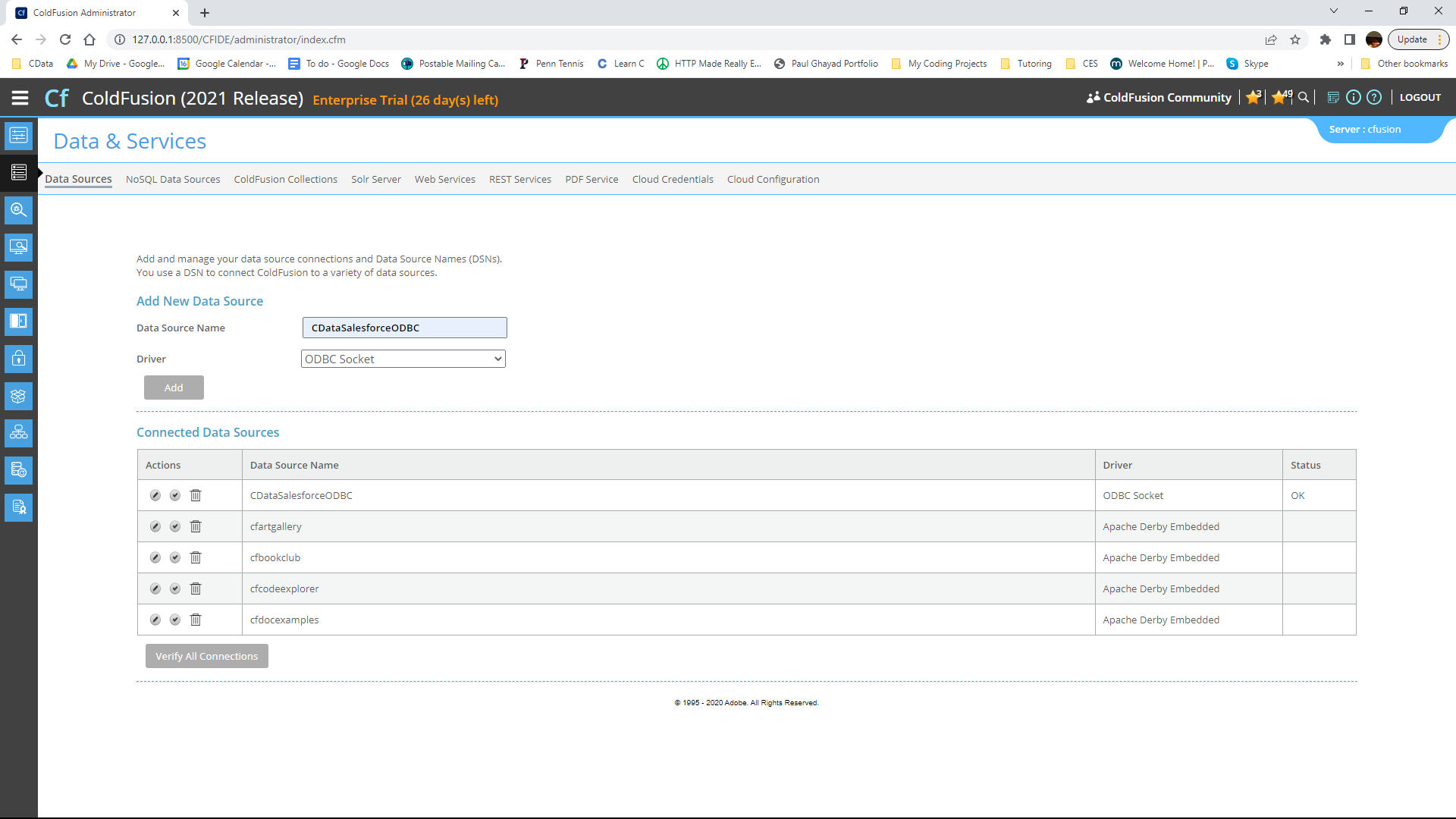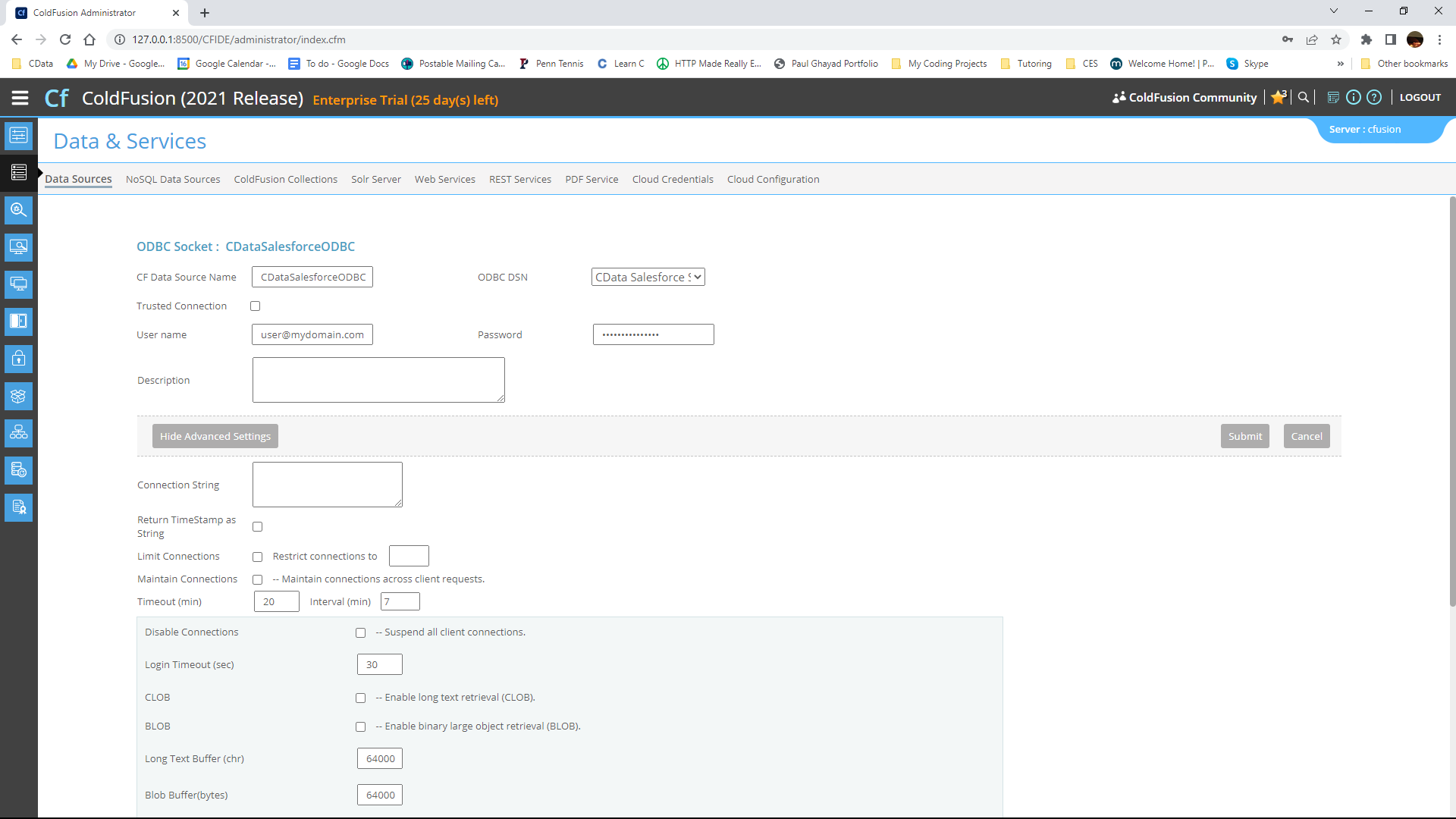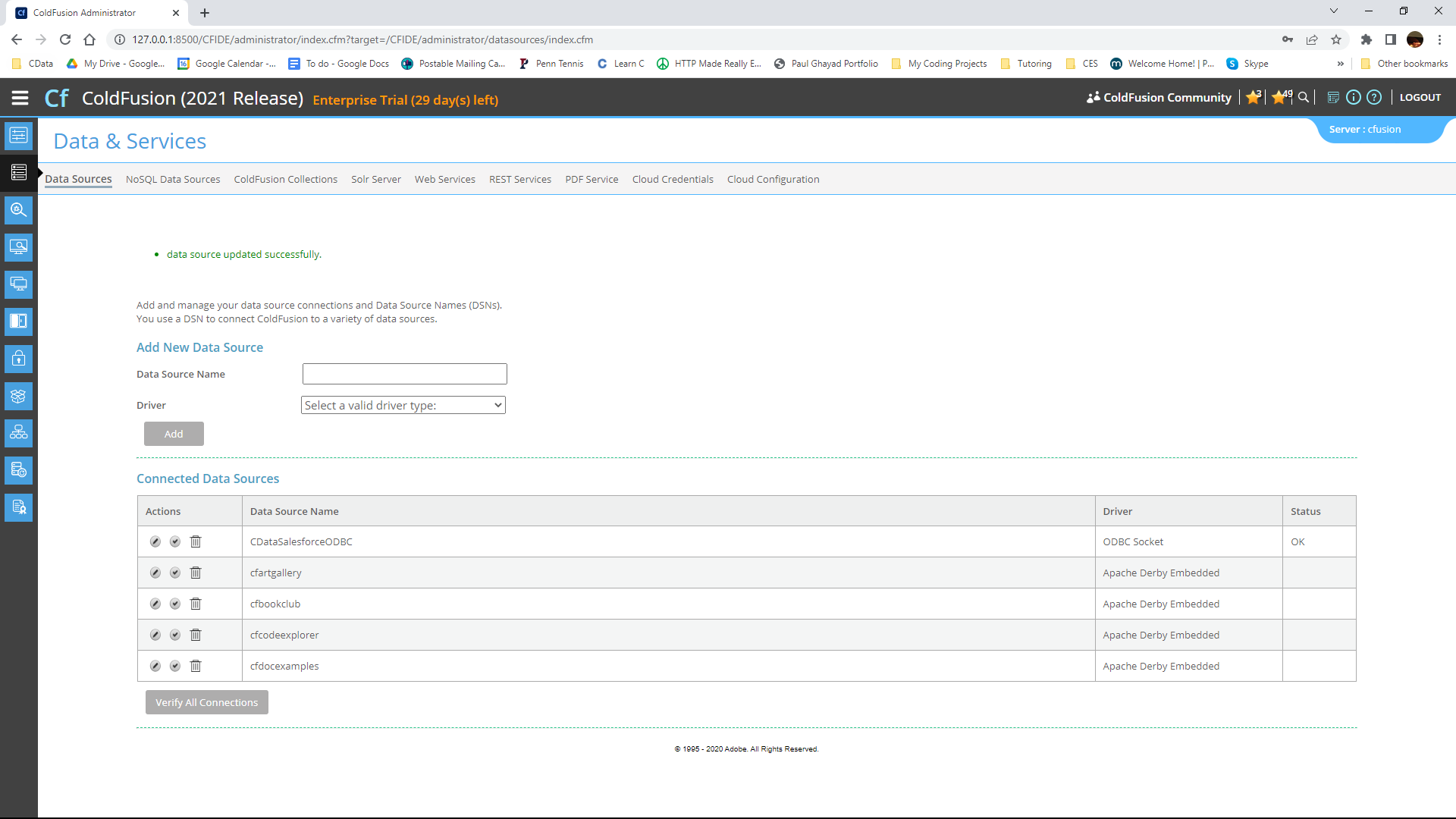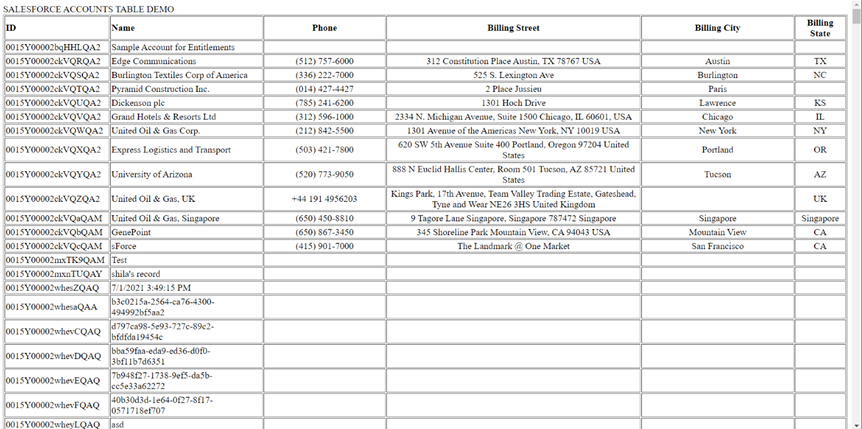Discover how a bimodal integration strategy can address the major data management challenges facing your organization today.
Get the Report →Import Real-Time XML Data in ColdFusion to Build Applications
Use CData ODBC drivers to import and use XML data in ColdFusion.
Adobe ColdFusion is a web and mobile application development platform. It uses its own scripting language, ColdFusion Markup Language (CFML), to create data-driven websites as well as generate remote services, such as REST. When ColdFusion is paired with the CData ODBC Driver for XML, you can link your ColdFusion web and mobile applications to operational XML data. This allows for your applications to be more robust and complete. This article details how to use the ODBC driver to create a table populated with XML data from within a ColdFusion markup file.
To follow along with this tutorial, you need to install the CData ODBC Driver for XML and Adobe ColdFusion.
Configuring the Connection
If you have not already, first specify connection properties in an ODBC DSN (Data Source Name). This is the last step of the driver installation process. You can use the Microsoft ODBC Data Source Administrator to create and configure ODBC DSNs.
See the Getting Started chapter in the data provider documentation to authenticate to your data source: The data provider models XML APIs as bidirectional database tables and XML files as read-only views (local files, files stored on popular cloud services, and FTP servers). The major authentication schemes are supported, including HTTP Basic, Digest, NTLM, OAuth, and FTP. See the Getting Started chapter in the data provider documentation for authentication guides.
After setting the URI and providing any authentication values, set DataModel to more closely match the data representation to the structure of your data.
The DataModel property is the controlling property over how your data is represented into tables and toggles the following basic configurations.
- Document (default): Model a top-level, document view of your XML data. The data provider returns nested elements as aggregates of data.
- FlattenedDocuments: Implicitly join nested documents and their parents into a single table.
- Relational: Return individual, related tables from hierarchical data. The tables contain a primary key and a foreign key that links to the parent document.
See the Modeling XML Data chapter for more information on configuring the relational representation. You will also find the sample data used in the following examples. The data includes entries for people, the cars they own, and various maintenance services performed on those cars.
Adding a Data Source and Creating a Table
After creating a DSN, follow the steps below to add a new data source, test our connection to it, create a ColdFusion markup file, and, finally, import XML XML data and display it in a table in ColdFusion:
-
From the ColdFusion administrator interface, choose Data & Services.
![Selecting Data & Services]()
-
Here, click "Add New Data Source". The data source name can be any name, provided it conforms to the ColdFusion
variable naming conventions. For our ODBC driver, choose "ODBC Socket", then click the "Add" button.
![Adding Data Source Name]()
-
From the ODBC DSN Dropdown menu select CData XML Sys. Under the Advanced Settings section, leave the
Connection String blank. Note that any properties specified in this input field will override the ones specified in the
DSN Configuration.
![Populating driver properties]()
-
Now, test the connection by pressing the check mark to the left of the CDataXMLODBC data source you just created.
When the data source reports an "OK" status, it is ready for use.
![Testing the connection]()
-
Next, create a new ColdFusion Markup file (.cfm) and place it in the wwwroot directory ("C:\ColdFusion2021\cfusion\wwwroot")
for ColdFusion.
The following code queries the data source:
<cfquery name="XMLQuery" dataSource="CDataXMLODBC"> SELECT * FROM people </cfquery>And a CFTable can be used to quickly output the table in HTML:<cftable query = "XMLQuery" border = "1" colHeaders colSpacing = "2" headerLines = "2" HTMLTable maxRows = "500" startRow = "1"> <cfcol header="<b>[ personal.name.first ]</b>" align="Left" width=2 text="[ personal.name.first ]"/> <cfcol header="<b>[ personal.name.last ]</b>" align="Left" width=15 text="[ personal.name.last ]"/> ... </cftable>Full code, including the HTML portion is available below:<html> <head><title>CData Software | XML people Table Demo </title></head> <body> <cfoutput>#ucase("XML people Table Demo")#</cfoutput> <cfquery name="XMLQuery" dataSource="CDataXMLODBC"> SELECT * FROM people </cfquery> <cftable query = "XMLQuery" border = "1" colHeaders colSpacing = "2" headerLines = "2" HTMLTable maxRows = "500" startRow = "1"> <cfcol header="<b>[ personal.name.first ]</b>" align="Left" width=2 text="[ personal.name.first ]"/> <cfcol header="<b>[ personal.name.last ]</b>" align="Left" width=15 text="[ personal.name.last ]"/> ... </cftable> </body> </html> -
Finally, run the code in a browser. It produces a table populated with XML data!
![Running the code]()
As a note, the CData ODBC Drivers also support parameterized queries using the cfqueryparam element.
For example:
SELECT * FROM Account WHERE name =
Get Started Today
Download a free, 30-day trial of the CData ODBC Driver for XML and start building XML-connected applications with Adobe ColdFusion. Reach out to our Support Team if you have any questions.










